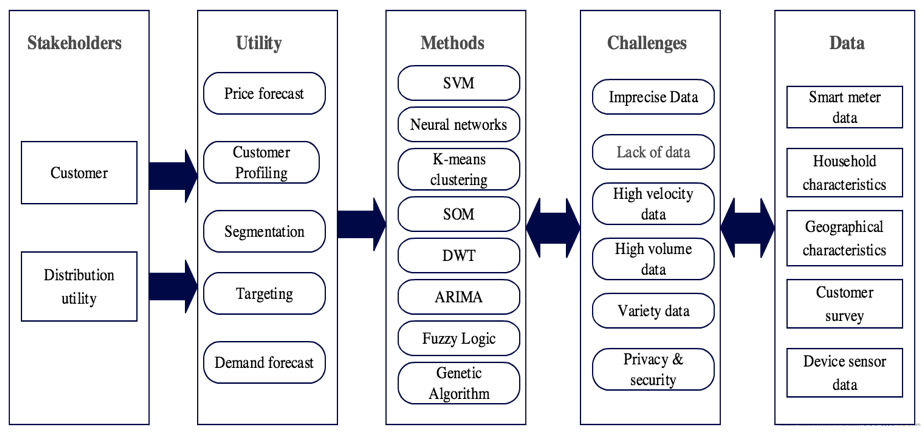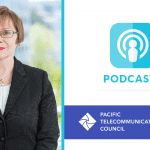 Smart user centric power management leverages the 5G era
Smart user centric power management leverages the 5G era
The application of ICT in the power sector has given rise to smart metering infrastructure (SMI), a product segment that is expected to gather support from information and technology vendors and that bends toward a sustainable, environmentally-friendly ecosystem.
SMI provides data rich in variety, veracity, velocity, and is suitable for generating actionable insights with the application of big data or data mining algorithms. This is creating open opportunities for research and practice, and appeals to both academicians and business leaders to come together for building “futuristic” products. The success of the smart power ecosystem depends on a reliable end-to-end data flow and high-data processing capabilities.
Upcoming 5G mobile networks could enhance data transmission capabilities between smart grids, smart meters at home, mobile phones of users, wireless sensors on devices consuming electricity, and other off-grid systems like solar cell producing electricity. Moreover, researchers in the field of analytics have suggested that consumption data from smart meters at household or device level, along with responses to questionnaires on lifestyle, and other variables such as weather conditions, could be applied for performing consumer demand or price estimations. This is referred to as context-based user data mining and is done to elicit electric device usage patterns and also make intelligent price and consumption estimates, which could be utilized for regulating production at power grids. This opens the door to new “smart user centric power management” paradigms leveraging the 5G network.
A particular challenge already highlighted by both academia and industry is to identify suitable data mining algorithms for a given application like estimating the demand, usage profiling of commercial and industrial customers, and so on. We conducted a rigorous literature review and presented a taxonomy of the smart meter stream data mining ecosystem. For the summary of our literature review, refer to Figure 1.
The broad framework elements shown in Figure 1 provide an understanding of stakeholders, their goals behind mining SMI data, commonly used methods, challenges related to data processing, and various data sources that can be integrated.

Figure 1 Landscape of data mining applications on smart metering infrastructure
Key applications for which analytical algorithms could give better results are dynamic pricing, dynamic load determination, and user profiling. By informing hourly pricing to the customers, behavior change might be observed as household customers might be sensitized to shift activities (like using a washing machine or dishwasher) to the time of day when charges are low. Data mining algorithms also enable re-identification of customers based on dataset features like consumption pattern, usage details, etc. Thus, suppliers could determine dynamic time of use tariff by clustering user groups into three categories: commercial, industrial, residential. Data mining algorithms have applications such as data pre-processing, customer segmentation, load disaggregation, and feature selection, amongst others.
Many firms, initiatives, and protocols are already active in the SMI ecosystem, but as the framework figure suggests it is potentially a complex one requiring significant interconnectedness. For example, there are substantial efforts directed at smart meters and in upgrading traditional metering systems with wireless technologies. There are not only complexities at the customer level, we are also becoming used to household-level generation of renewable energy and even back to grid distribution of excess power generated. Further complexity resides in the management of the SMI datasets that are likely to be huge but involve some data attributes not useful for meaningful analysis. Meanwhile, we already see the likelihood of blockchain applications and initiatives such as the Energy Web Foundation working to realize the potential of blockchain to store data.
These are just a few of the many interacting factors and possibilities. With many pathways and options, one or several transformations of the entire ecosystem are clearly possible. Overall, a new ICT-enabled power ecosystem integration, smart meters, and smart grids have already started transforming energy production, consumption, and distribution from the traditional practices with which we are familiar. Clearly, high-speed connectivity is a vital foundation for these to progress further. We can expect a much more sophisticated ecosystem as connectivity becomes more embedded, along with many exciting opportunities for customers, academics, and energy suppliers alike.
The PTC Young Scholar Program (YSP) recognizes, encourages, and supports up-and-coming scholars in the field of information and communication technologies. Selected participants are invited to present their research at PTC’s annual conference. Deadline for applications to the 2019 Young Scholar Program is 3 September 2018.







